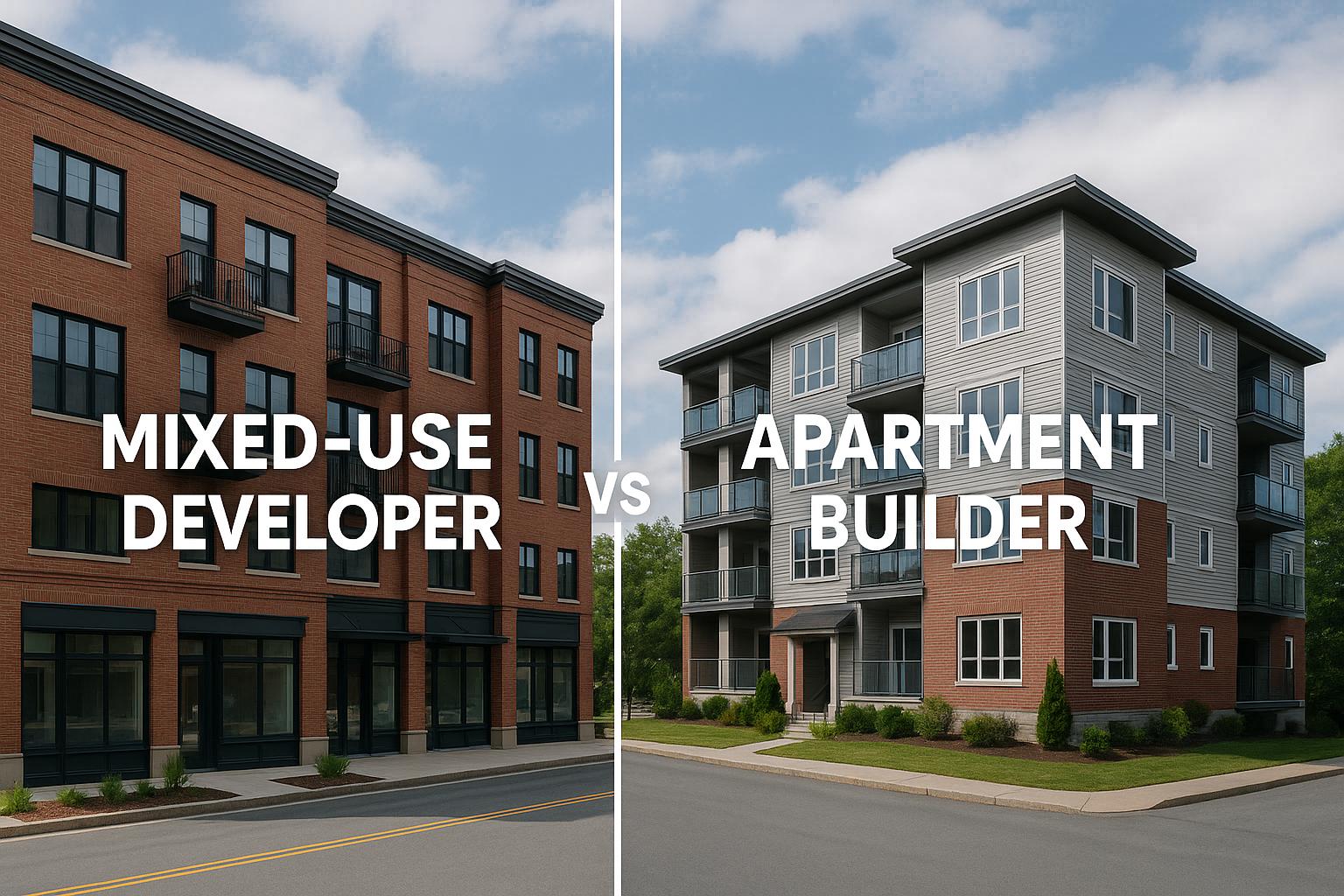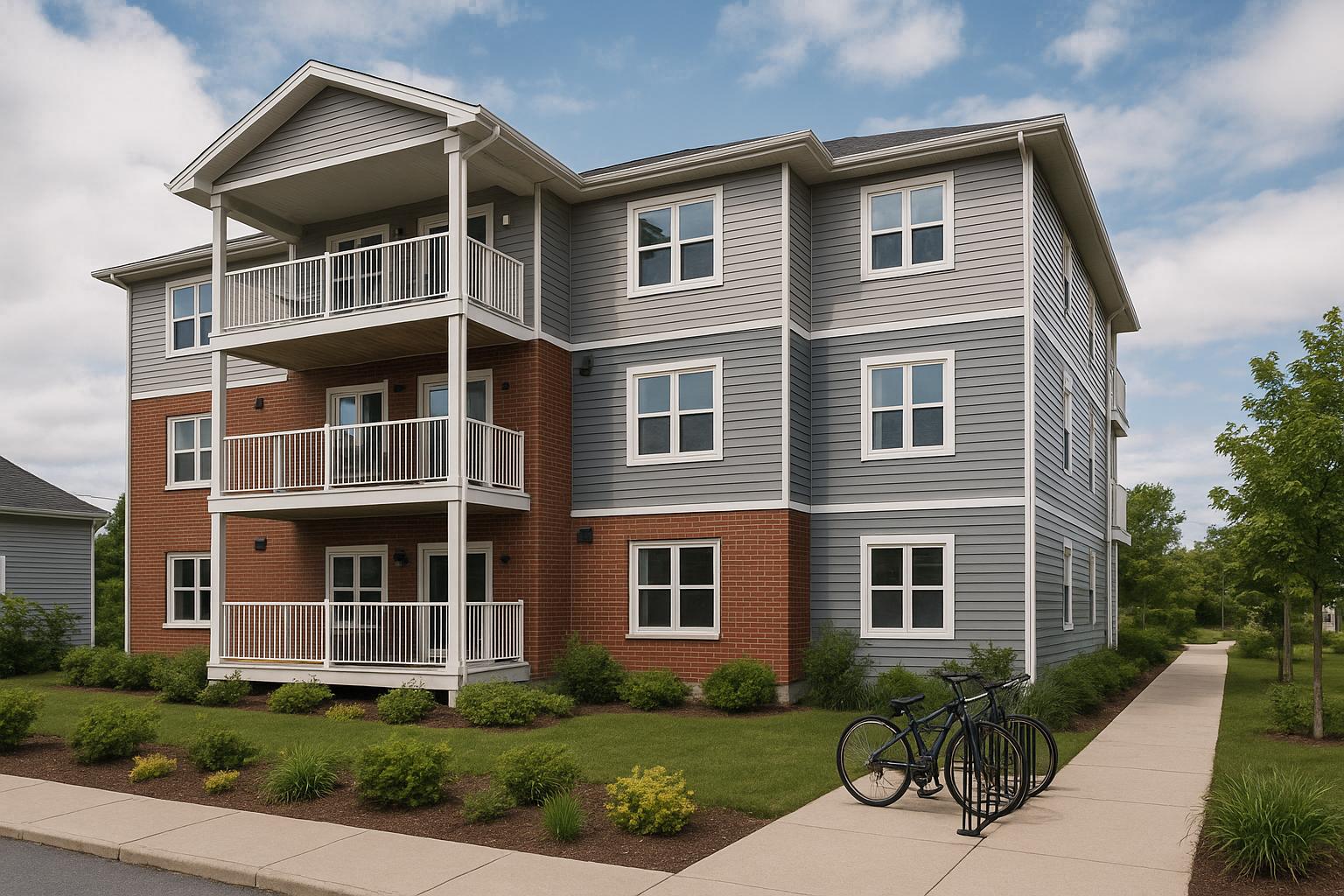If you want to rent homes in Nova Scotia, you need to know about holdbacks and builders’ liens. These rules help you pay workers and suppliers right and stop you from paying twice or facing late jobs. Here is what you should know:
- Holdbacks: By law, you hold back 10% of each pay to your workers and helpers. You put this money in a trust account. Keep it there for 60 days after the job ends in case some work is not paid for.
- Builders’ Liens: If workers or suppliers do not get their money, they can claim your place with a lien. This keeps you from selling or getting a loan on your place. You must fix this soon.
- Risks: If you skip holdbacks or pay the wrong way, you could pay twice, get into court fights, and have your work stopped.
- Fixes: Write down all pays, work with one builder or one team, and ask a lawyer to help you follow Nova Scotia’s Builders’ Lien Act.
These simple steps will help you stay safe, keep your money, and make your job go smooth.
Builders Liens for Owners (and how to Remove them)
What Property Owners Need to Know When Building More Than One Home
If you own land in Nova Scotia and plan to build homes to rent out, there are some laws you must follow. These rules, called the Builders' Lien Act and Builders' Lien Regulations, help protect owners and also help those who work on the homes. You must follow these rules for everyone to stay safe.
What Is a Holdback and Why Do You Need It?
When you run a building job, there is a big rule in Nova Scotia. You have to keep back 10% of each payment you make to workers. This part is called the holdback. The law says you must put this money in a bank account that is not mixed with your other money. Usually, your lawyer will do this for you and make sure it stays safe until you finish your project and meet all the rules.
If you use a loan to pay for the build, the lawyer will take care of the holdback by putting the 10% in a trust. That money cannot be touched for 60 days after the work is done. The countdown starts when your lawyer knows you have finished the work, so you must tell your lawyer the end date.
Let’s look at how this works: Say you build four units, and each one costs $160,000. The holdback for all four is $64,000. This money must stay in the trust until all rules are met. Make sure you plan so you don’t run out of money.
Not following these rules with the holdback can cause big money problems, and you might lose cash. Below are some of the things that can happen.
What Can Happen If You Don’t Follow Holdback Rules
If you skip the holdback, you could face big bills. The main risk is having to pay twice for the same job. Here’s how: You pay your top contractor all the money, but they do not pay all the people who work under them. Someone who does not get paid can place a lien on your building. Then, you might have to pay that person even if you already paid your top contractor. This can make you pay more than you planned and put you in trouble.
"Failure to comply with holdback requirements could lead to double payments for the same work if sub-contractors seek payment from the lien fund." - DCL Law [1]
A lien that is filed can cause big problems. Brennan LeJean, who works as a lawyer at DCL Law, tells us more:
"A builders' lien is registered with the provincial land registry against the property where the work was done... it usually means they cannot sell the property, gain access to another draw of their construction mortgage, or take out any new secured debt." - DCL Law [1]
If you do not keep part of the payment as a holdback, you may have to pay the full amount still due to other workers or those who sold goods, even if you paid your main worker. This could put your work and your money at risk and cause big problems.
Best Ways to Manage Holdbacks
To stop these issues, you must handle holdbacks well. Here are steps you can follow to stay safe and within the rules:
- Take off 10% as holdback every time you pay a worker. Do not skip this step.
- Keep good notes of each payment and all the things you pay for.
- Watch who is involved, like small workers and those who sell goods, even if you only signed with the main worker.
Your lawyer who helps with land and buildings is very important for holdback work. Give them clear and true dates for when the job is done, so the 60-day time limit can be marked well. Do not give rough or unsure dates - real numbers matter.
You can also look for one team or company that does all building work. These teams often have their own ways to keep holdback rules in place, which helps you do less work and worry less about unpaid bills or legal issues.
Builders' Liens: What They Are, How to File, and Why Deadlines Matter
Builders’ liens have strict rules on when and how you can file. Get it wrong, and your build can face big trouble. If you know the steps and don’t miss the due dates, you can keep your money safe.
How to File a Builders’ Lien
If workers or suppliers don’t get paid, they may file a lien. This means they note with the land office what work was done and what is still unpaid. Once this is done, the lien stands on the title of the land for all to see. But don’t forget, you must follow a strict timeline.
The steps are tricky, so talk to a lawyer if you are putting in or fighting a lien. If you mess up the forms, you may lose lots of cash. If your lien is not fair or the price is too high, you could be hit with even more costs and more trouble.
Builders' Liens: The Clock Is Ticking
In Nova Scotia, you have 60 days from when you last worked or sent goods to file a lien. You can't get more time, so you have to act fast.
After you file, the lien is good for 105 days from the last work or last goods. You need to go to court in that time, or your lien will not last. Say your work stopped on Jan. 15 and you file on Mar. 16. You only have until Apr. 30 to take more steps. If you miss these dates, your lien is lost, and you won’t have a way to get paid.
What Builders’ Liens Can Do To Your Build
Liens can hold up your plans in lots of ways. You might not be able to sell the property or get a loan. Your build may not finish on time.
If you are doing work on many units, liens can stop you from using funds and bring legal fights, which mean your rent money gets pushed back. Cash can dry up, work can slow, and people may not move in when you want.
To lower this risk, try to hire one group or firm to run all parts of the build. If they manage all jobs, you only deal with one team, and that means fewer people who can file liens. This way, paying is easier, and you have less worry.
sbb-itb-16b8a48
Smart Ways to Manage Holdbacks and Builders' Liens
It is one thing to know about holdbacks and builders’ liens, but the way you use best ways each day can help keep your build safe and by the rules. If you own a home or land in Nova Scotia, doing these best things can make lien issues less of a pain and help your build stay on course.
Keep Good Payment Records
To stay safe from fights and holdback issues, always keep clear records of each payment. Write down every payment - count the 10% holdback and big steps like when most of the work is done.
Your notes must show the day money was paid, how much was paid, how much was held back, and what work was done for that money. This kind of record keeping can stop you from paying twice, which can happen when people fight about money. Say a lien gets filed - these records can show what you paid and help you not pay more than the holdback needed by law.
Mark the day most work is done, then keep track of the next 60 days for the holdback. This way, you know for sure when you can let out the holdback funds. If you have a build loan, give your lawyer the dates and numbers, so the 10% holdback gets handled how the law wants.
Get Help From Experts
The rules for building jobs are not easy, so ask for help when you need it. A lawyer who knows about building can help you if you have to make or fight a lien. If someone files a lien on your house, or if you do not know the rules about holdbacks, talk to a lawyer to not make a mistake that can cost a lot.
The Builders’ Lien Act works to keep people who work or give to a build from not getting paid. It lets them put a claim on your place if they are not paid. A build expert can also help set up good ways to pay people and keep notes, so fights do not happen.
Work With One Main Build Team
If you choose to build with one group who does everything, it can be much easier to follow the rules and dodge lien fights. These teams do the plan, work, and fix problems all in-house, so you deal with less people, and paying is more easy.
When you use lots of small teams, liens and payment troubles can grow. But when you use one main build group, they bring it all together, so things run smooth, and the 10% holdback gets done right. These groups often work for a clear set price - like $160,000 for each home - so you know what you will pay, and they handle the needed rules on their end.
If you do face a problem, having one main person to talk to makes it easy to sort out and fix problems. It keeps your build moving and keeps costs where you want. This way, you lower lien risks, and your whole build goes much better.
Easier Building: Less Risk and More Clarity
Working with one builder team makes things simpler than old ways of making homes. If you want to build rental units in Nova Scotia, you must pick how you will get it built. The old way needs you to deal with many people, which makes things tough. You must handle money holdbacks, worry about builder claims, and face more risk. The new way, called “integrated building,” makes these problems smaller by putting all rules and tasks in one group, so you may not have to worry about builder claims as much.
Old Ways vs. New, Simple Building
The old way of home building has lots of small jobs and some chains of pay. Owners have deals with a lead builder and then those builders hire other builders. This makes for much more work for you and your team, who must check many jobs and make sure money holds are right and finish dates are tracked. If money is not done right, fights over pay can happen between builders, which means they might put a claim on your land, even when you already paid the lead builder.
With integrated building, all the main people you need - planners, designers, builders, and workers - work together as one group you deal with. You only need to talk to one main team, so you don’t need to keep track of many outside builders and pay chains. This makes rules easy to follow and money safe. You also may get locked-in prices, so you know early on what you will pay for each part or home - like $160,000 for one unit. You see your costs from the start, and it helps you plan better.
How This Simple Team Handles the Rules
Builders' liens can be a very complex process, often necessitating the hiring of a lawyer[2].
Builders who work as a team take care of other workers and jobs inside their group. This takes away a lot of stress and fuss for people who own the land or the house. Owners do not have to check if each worker gets paid, or keep back money to be safe. The team watches over the rules and work for all jobs at once. This means there is less work to track and less chance of mistakes. Owners do not have to worry about paying the same person twice, even if someone asks for more from the team fund.
Why Working With One Team Helps in Nova Scotia
Nova Scotia has rules for building and paying workers, like how and when to give out money that is held back. There are steps to follow, and some lucky workers can get their money sooner, after their job is checked and finished. When there are many groups working, keeping track of this gets hard. But the builder group can do it all inside, giving money and following the rules by themselves. They know how things work in Nova Scotia, so they make sure everything is right and legal.
Companies close to Halifax know the local ways well. They deal with town rules, the city laws, and other needs with skill. Because they know these rules, there are fewer slips or mistakes. Groups that plan and build together keep these rules in mind. They also help owners feel safe about what they spend, since prices are set and clear.
For people with land or homes in Nova Scotia, one building group means one person to talk to and one system for following rules. This makes things easy and smooth, with fewer problems when it comes to holding back money or dealing with liens. Your job is more sure and simple, and you can trust things will go well and stay on track, without new or strange troubles.
Keep Your Money Safe as a Home Owner
In Nova Scotia, laws help both people who own homes and the people who build them. If you do not use these rules the right way, you may lose cash or face big problems with your project.
Think about if you want to build a home with four units, or even more. The cost for such work can go past CA$640,000. By law, you must keep some money back from each payout. This money cannot be used or given away until a set time ends. This can make it hard to pay your bills or keep work moving as you planned. So, it is best to have a smart plan to lower risk and keep your project safe and on time.
If you use many builders to do jobs on their own, things may go wrong. If one does not get paid all they are owed, they can make a claim called a lien. This may stop your work, and you could face court problems.
To keep clear of these issues, many owners now use one builder for all jobs. This way, one team does the plan, the layout, the work, and the build. You just talk to one group, which makes paying easier and lowers the risk of liens. This also helps you hold onto your money and keep the job moving step by step.
Another good way is to use deals where you pay a set price, so costs don’t go up. These deals make sure you know what you will pay, so you won’t get hit by extra costs you did not see coming.
Getting the work done on time is also key, most of all when you need to make rent money. For instance, if one unit can rent for CA$1,950 each month, a late finish will mean you miss out on cash you need. Builders who promise to finish in six months - and pay cash if they are late - will help you start making money on your place and keep your plans on track.
FAQs
Related Blog Posts
- Construction Financing in Nova Scotia: A Guide to Construction Loans and Mortgage Options
- Staying on Schedule: How to Prevent Delays in Your Nova Scotia Home Build
- Construction Inspections in Nova Scotia: Stages, Pass Criteria, and Owner Prep
- Construction Mortgage 101 in Nova Scotia: Draws, Holdbacks, and Lender Requirements



